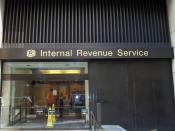Based on the attached documents and the facts in the case, I have found:
ISSUIES:
(1) Whether Owen DiGovmentt is entitled to claim dependency exemptions and to a child
tax credit for his children for 2004.
(2) How the obligations Owen DiGovmentt paid to his ex-spouse have to be classified,
as alimony deduction or a child support?
RULES:
1. Internal Revenue Code - Sec. 151 (c) (1).
2. Internal Revenue Code - Sec.152 (e) (1), Sec.152 (e) (2), and Sec.152 (e) (4).
3 Internal Revenue Code - Sec. 215 (a), Sec. 215 (b), Sec. 215 (c) (1), and Sec. 215 (c)
(2).
4. Internal Revenue Code - Sec. 71 (a), (b), (c), (d), (e), (f), and (g).
5. IRS - Publication 504: Divorced or Separated Individuals." Cat. No. 15006I. 2004
6. IRS - Form 8332: Release of Claim to Exemption for Child of Divorced or Separated
Parents." Rev. December 2003.
OMB No. 1545-0915
ANALYSIS:
Dependency Exemptions
Generally, IRC section 151(c)(1) allows taxpayers an exemption for dependent children. In the case of divorced parents, the custodial parent gets the exemption. That parent, however, may release his or her claim to the exemption, allowing the noncustodial parent to claim the deduction. The custodial parent does this by signing Form 8332, Release of Claim to Exemption for Child of Divorced or Separated Parents, which the noncustodial parent attaches to his or her tax return.
In lieu of form 8332, the noncustodial parent may attach a written declaration conforming to the substance of form 8332. To meet the requirements of IRC section 152(e)(2), this statement must include the
çÂÂçÂÂçÂÂçÂÂName of the dependent child.
çÂÂçÂÂçÂÂçÂÂYear(s) for which the claim to the exemption has been released.
çÂÂçÂÂçÂÂçÂÂSignature of the custodial parent confirming consent to release the tax exemption.
çÂÂçÂÂçÂÂçÂÂSocial Security number of the custodial parent.


